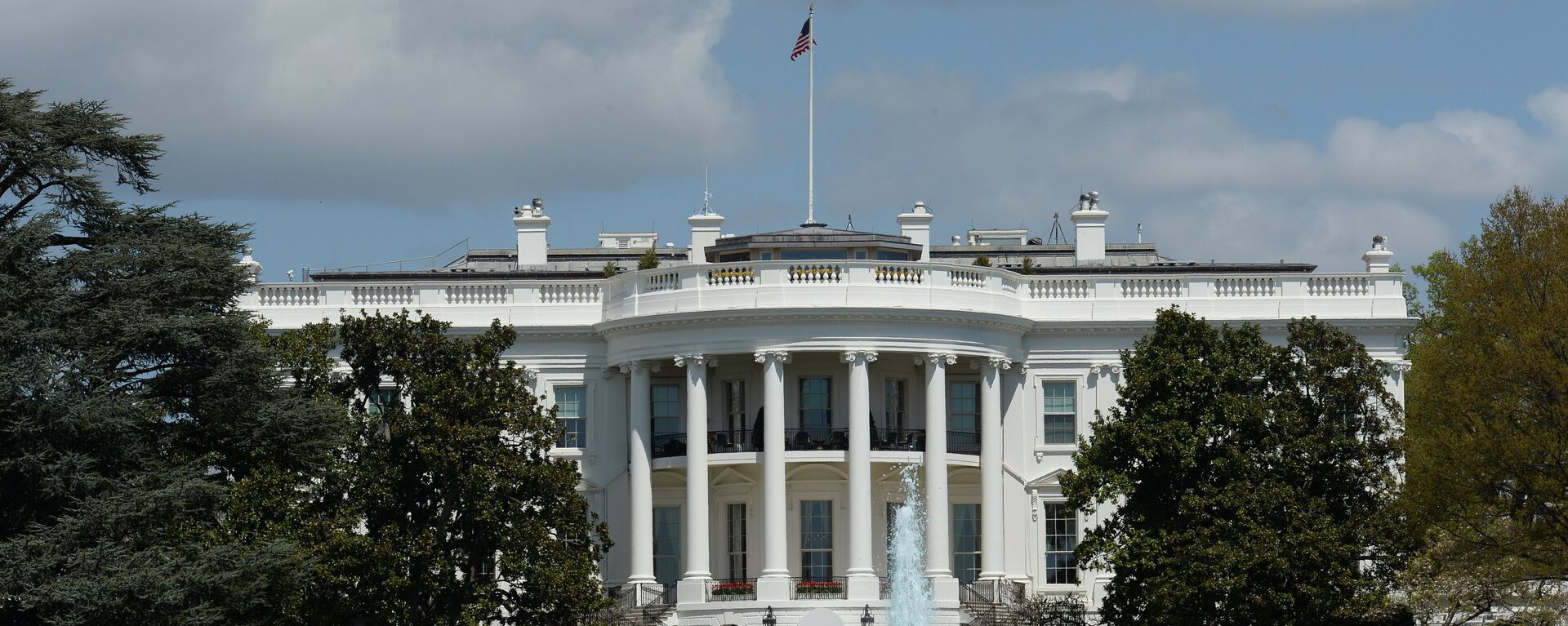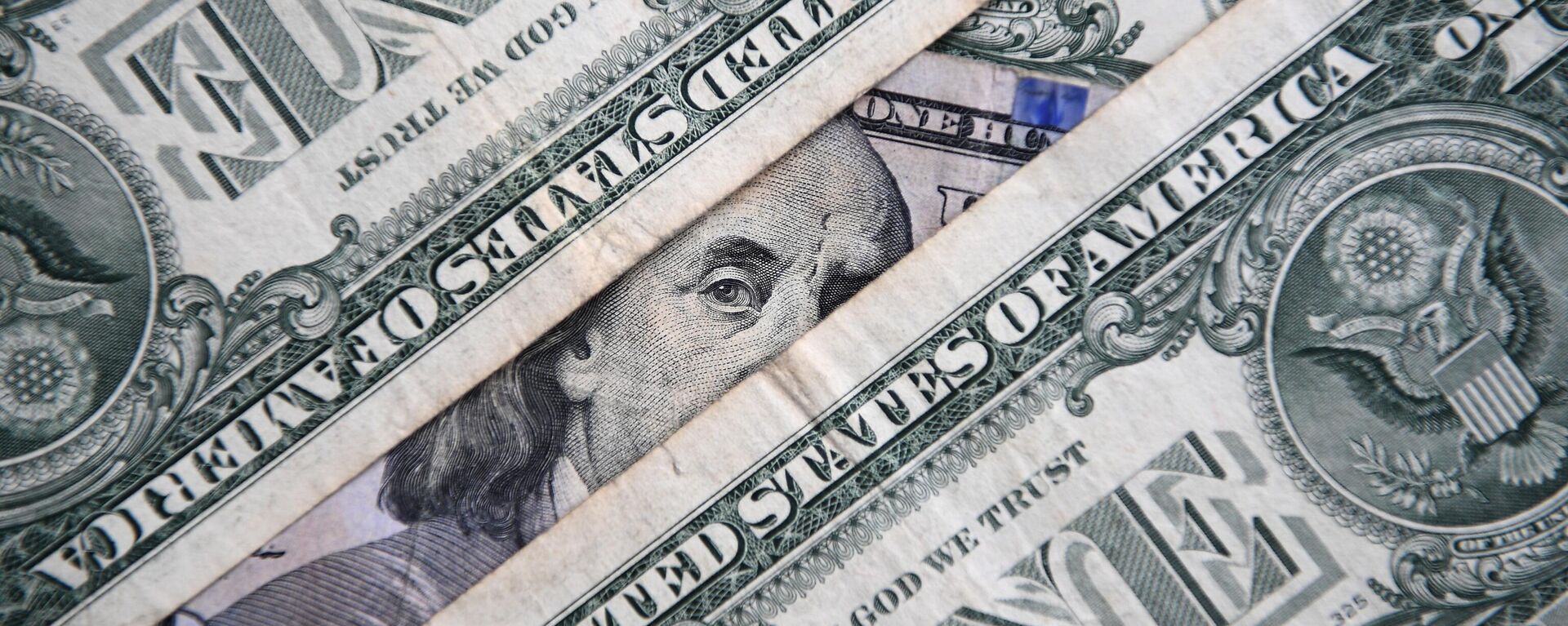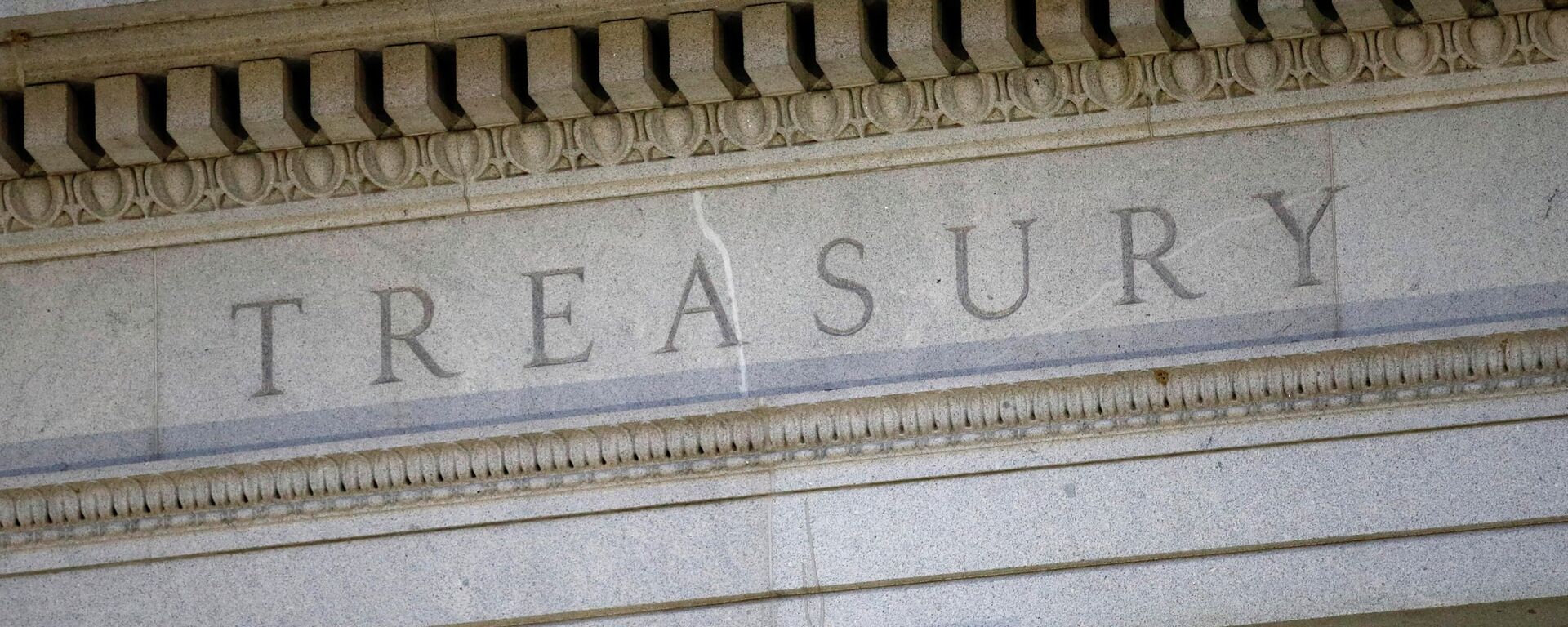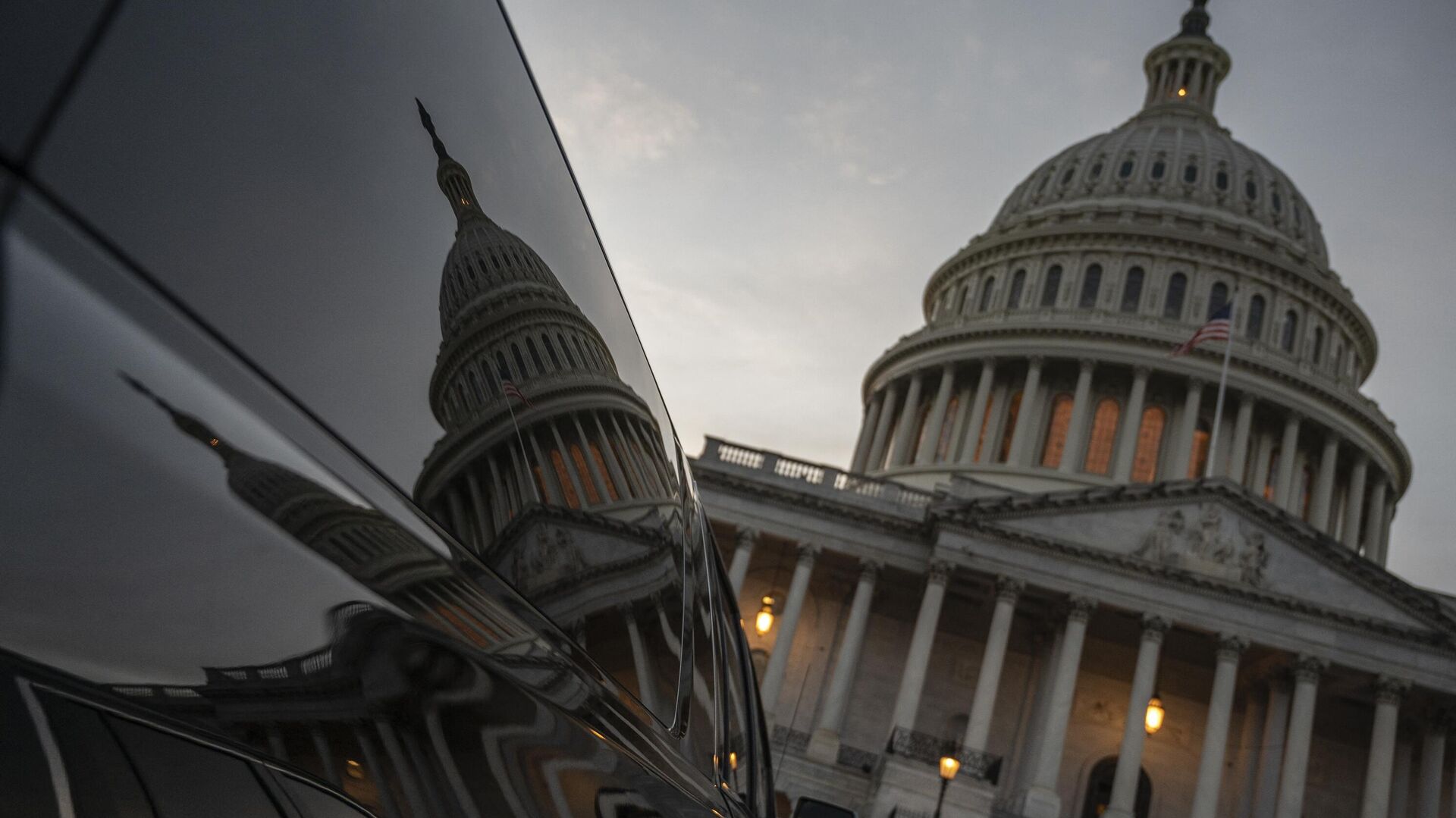https://sputnikglobe.com/20230120/what-happens-if-us-defaults-on-its-debt-in-2023-1106511918.html
What Happens If US Defaults on Its Debt in 2023?
What Happens If US Defaults on Its Debt in 2023?
Sputnik International
Treasury Secretary Janet Yellen has warned that the US government had hit its debt limit. What happens If the US defaults on its debt in 2023?
2023-01-20T12:16+0000
2023-01-20T12:16+0000
2023-01-20T12:29+0000
us
debt ceiling
sputnik explains
default
us treasury
congress
joe biden
janet yellen
debt
us debt
https://cdn1.img.sputnikglobe.com/img/07e6/0c/0e/1105438904_0:187:2981:1863_1920x0_80_0_0_c5858814484b0c86d39712fb120b7cdb.jpg
What Does Default Mean?A default is when one misses payments on money that was borrowed. For an individual person, a case in point would be failing to pay one's credit card bill. The same is true of interest payments required from businesses and countries. In the case of the latter, it is called a sovereign default. As we know with the case of a skipped credit card payment, this negatively affects one's credit rating. Furthermore, it plays an important role when one tries to secure loans in the future.To make up the difference between the money that the US federal government spends, typically more, and the revenue it takes in, it relies on the simple process of borrowing money. It's an easy guess that this debt gradually increases overtime. But there is a limit to this - a law dating back to 1917 set in place a debt ceiling. This is the total maximum amount of money that the United States government is authorized to borrow to meet its existing legal obligations, like, for example, Social Security and Medicare benefits, national debt interest, and other payments.The debt ceiling was conceived by Congress during the First World War as a way to make it easier to pass large spending bills. The debt ceiling is important because if lawmakers are unable to raise it in time, the US government would face a shortage of cash to pay its obligations. So this is where the process of hiking up the debt ceiling comes in.Since 1960, according to the US Department of the Treasury, the debt limit has been raised, extended, or revised 78 separate times amid fears of a default. Most recently, this occurred in December 2021, when the US federal debt ceiling was raised by $2.5 trillion to $31.381 trillion, a figure which is expected to last until at least July 2023.An important aspect of the whole procedure is that when the debt ceiling is raised, lawmakers are not authorizing any new spending, but only granting the government a "lifeline" of sorts, so that it may take on an amount of debt that would cover already existing spending obligations.What Are the Consequences of Hitting Debt Limit?Breaching the debt limit would be fraught with severe and wide-ranging fallout, such as:Furthermore, many of the programs the government funds would be at risk, with Social Security payments, veterans’ benefits, and federal employees’ salaries, among others, in jeopardy and facing delay payments or default. As interest rates increase, due to plummeting investor confidence, this, in turn, would result in a surge in prices, contributing to inflation.According to US Treasury Secretary Janet Yellen, "Failure to meet the government’s obligations would cause irreparable harm to the US economy, the livelihoods of all Americans, and global financial stability.” Furthermore, the danger of a looming default comes at a time when the US is witnessing a bitter inflationary cycle, the Federal Reserve has been hiking up interest rates to their highest levels in years, and economists are forecasting a recession to set in at some point in 2023.What Happens if US Defaults on Its Debt?Incidentally, back in 2021 the White House itself painted a pretty grim picture of “life after default.”A default, it warned, would “fundamentally hinder the Federal government from serving the American people.” According to the White House, it would endanger all the fundamental basic functions of the federal government, ranging from national defense, to the public health system. In addition, federal government payments critical to families’ livelihoods would be endangered. Furthermore, fallout from such a default was likely to trigger “a recession and a credit market freeze that could hurt the ability of American companies to operate.”Has the US Ever Defaulted?No, the US has never deliberately defaulted on its debt. Bearing in mind the potential havoc this could wreak, whenever the US approached the debt limit, Congress voted for the ceiling to raise or suspend the ceiling. Back in 1979, a technical bookkeeping error resulted in delayed bond payments that affected a minor share of investors. It reportedly took three weeks to rectify the situation. Just the threat of an imminent default back in 2011, when Barack Obama was in the White House with Joe Biden as his vice president, prompted the only credit rating downgrade in US history. At the time, S&P Global Ratings (former Standard and Poor’s) stripped America's economy of its AAA status.The issue of the debt limit, important as it is, has been increasingly used by political parties as leverage to push through their agendas. Currently, the new, post-November midterms Republican House majority is trying to negotiate with the Democrats to force the government to slash spending. House Speaker Kevin McCarthy weighed in on the debt ceiling earlier, saying: “You couldn’t just keep increasing it. Let’s sit down and change our behavior for the good of America. Because what we’re going to do is bankrupt this country and bankrupt these entitlements if we don’t change their behavior today.”Looking ahead, one may anticipate several months of haggling over the issue of the debt ceiling. Previously, such face-offs have resulted in government shutdowns, with the most protracted in between December 22, 2018 and January 25, 2019.
https://sputnikglobe.com/20230109/is-there-a-limit-to-us-national-debt-1106161227.html
https://sputnikglobe.com/20230119/yellen-notifies-congress-that-us-treasury-has-begun-using-extraordinary-measures-to-fund-govt-1106497828.html
https://sputnikglobe.com/20230118/what-are-the-us-treasurys-extraordinary-measures-that-can-postpone-debt-limit-disaster-1106472784.html
Sputnik International
feedback@sputniknews.com
+74956456601
MIA „Rossiya Segodnya“
2023
News
en_EN
Sputnik International
feedback@sputniknews.com
+74956456601
MIA „Rossiya Segodnya“
Sputnik International
feedback@sputniknews.com
+74956456601
MIA „Rossiya Segodnya“
us debt default, us default on debt, what happens if the us defaults on its debt, what happens if us defaults on debt, us default on debt 2021, what would happen if the us defaulted on its debt, us default on debt meaning, us defaulting on debt, will us default on debt, has the us ever defaulted on its debt, what if us defaults on debt, us to default on debt, what will happen if us defaults on debt, us on track to default on debt, us debt default 2021, will the us default on its debt, has us ever defaulted on debt, debt default us, us debt default date, what would happen if the us defaults on its debt, us default on debt history, what will happen if the us defaults on its debt, did the us default on its debt, us on track to default on national debt, is the us going to default on its debt, us default on national debt, has the us ever defaulted on debt, us government default on debt, when did the us default on debt, consequences of us debt default, us government debt default, if us defaults on debt, when will the us default on its debt, has the us defaulted on its debt
us debt default, us default on debt, what happens if the us defaults on its debt, what happens if us defaults on debt, us default on debt 2021, what would happen if the us defaulted on its debt, us default on debt meaning, us defaulting on debt, will us default on debt, has the us ever defaulted on its debt, what if us defaults on debt, us to default on debt, what will happen if us defaults on debt, us on track to default on debt, us debt default 2021, will the us default on its debt, has us ever defaulted on debt, debt default us, us debt default date, what would happen if the us defaults on its debt, us default on debt history, what will happen if the us defaults on its debt, did the us default on its debt, us on track to default on national debt, is the us going to default on its debt, us default on national debt, has the us ever defaulted on debt, us government default on debt, when did the us default on debt, consequences of us debt default, us government debt default, if us defaults on debt, when will the us default on its debt, has the us defaulted on its debt
What Happens If US Defaults on Its Debt in 2023?
12:16 GMT 20.01.2023 (Updated: 12:29 GMT 20.01.2023) On January 19, Treasury Secretary Janet Yellen warned that the US government had reached its statutory borrowing cap of $31.4 trillion, and since the "debt ceiling" had not been raised by lawmakers, she was proceeding with “extraordinary measures” so that its financial obligations could be met in order to avoid a default.
A default is when one misses payments on money that was borrowed. For an individual person, a case in point would be failing to pay one's credit card bill. The same is true of interest payments required from businesses and countries. In the case of the latter, it is called a sovereign default. As we know with the case of a skipped credit card payment, this negatively affects one's credit rating. Furthermore, it plays an important role when one tries to secure loans in the future.
To make up the difference between the money that the US federal government spends, typically more, and the revenue it takes in, it relies on the
simple process of borrowing money. It's an easy guess that this debt gradually increases overtime. But there is a limit to this - a law dating back to 1917 set in place
a debt ceiling. This is the total maximum amount of money that the United States government is authorized to borrow to meet its existing legal obligations, like, for example, Social Security and Medicare benefits, national debt interest, and other payments.

9 January 2023, 13:59 GMT
The debt ceiling was conceived by Congress during the First World War as a way to make it easier to pass large spending bills. The debt ceiling is important because if lawmakers are unable to raise it in time, the US government would face a shortage of cash to pay its obligations. So this is where the process of hiking up the debt ceiling comes in.
Since 1960, according to the US Department of the Treasury, the
debt limit has been raised, extended, or revised 78 separate times amid fears of a default. Most recently, this occurred in December 2021, when the
US federal debt ceiling was raised by $2.5 trillion to $31.381 trillion, a figure which is expected to last until at least July 2023.
An important aspect of the whole procedure is that when the debt ceiling is raised, lawmakers are not authorizing any new spending, but only granting the government a "lifeline" of sorts, so that it may take on an amount of debt that would cover already existing spending obligations.
What Are the Consequences of Hitting Debt Limit?
Breaching the debt limit would be fraught with severe and wide-ranging fallout, such as:
Higher interest rates for borrowers
Credit downgrade for the American government
Furthermore, many of the programs the government funds would be at risk, with Social Security payments, veterans’ benefits, and federal employees’ salaries, among others, in jeopardy and facing delay payments or default. As interest rates increase, due to plummeting investor confidence, this, in turn, would result in a surge in prices, contributing to inflation.
According to US Treasury Secretary Janet Yellen, "Failure to meet the government’s obligations would cause irreparable harm to the US economy, the livelihoods of all Americans, and global financial stability.”

19 January 2023, 15:10 GMT
Furthermore, the danger of a looming default comes at a time when the US is witnessing a bitter inflationary cycle, the Federal Reserve has been hiking up interest rates to their highest levels in years, and economists are
forecasting a recession to set in at some point in 2023.
What Happens if US Defaults on Its Debt?
Incidentally, back in 2021 the White House itself
painted a pretty grim picture of
“life after default.”A default, it warned, would “fundamentally hinder the Federal government from serving the American people.”
According to the White House, it would endanger all the fundamental basic functions of the federal government, ranging from national defense, to the public health system. In addition, federal government payments critical to families’ livelihoods would be endangered.
Furthermore, fallout from such a default was likely to trigger “a recession and a credit market freeze that could hurt the ability of American companies to operate.”
Has the US Ever Defaulted?
No, the US has never deliberately defaulted on its debt. Bearing in mind the potential havoc this could wreak, whenever the US approached the debt limit, Congress voted for the ceiling to raise or suspend the ceiling. Back in 1979, a technical bookkeeping error resulted
in delayed bond payments that affected a minor share of investors. It reportedly took three weeks to rectify the situation.
Just the threat of an imminent default back in 2011, when Barack Obama was in the White House with Joe Biden as his vice president, prompted the only credit rating downgrade in US history. At the time, S&P Global Ratings (former Standard and Poor’s) stripped America's economy of its AAA status.

18 January 2023, 21:10 GMT
The issue of the debt limit, important as it is, has been increasingly used by political parties as leverage to push through their agendas. Currently, the new, post-November midterms Republican House majority is trying to negotiate with the Democrats to force the government to slash spending. House Speaker Kevin McCarthy weighed in on the debt ceiling earlier, saying:
“You couldn’t just keep increasing it. Let’s sit down and change our behavior for the good of America. Because what we’re going to do is bankrupt this country and bankrupt these entitlements if we don’t change their behavior today.”
Looking ahead, one may anticipate several months of haggling over the issue of the debt ceiling. Previously, such face-offs have resulted in government shutdowns, with the most protracted in between December 22, 2018 and January 25, 2019.




